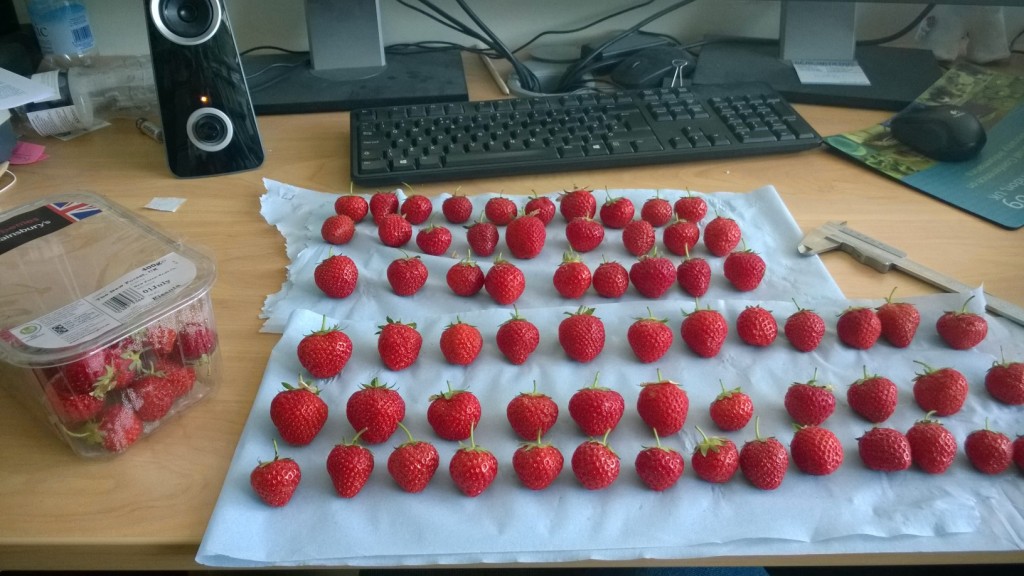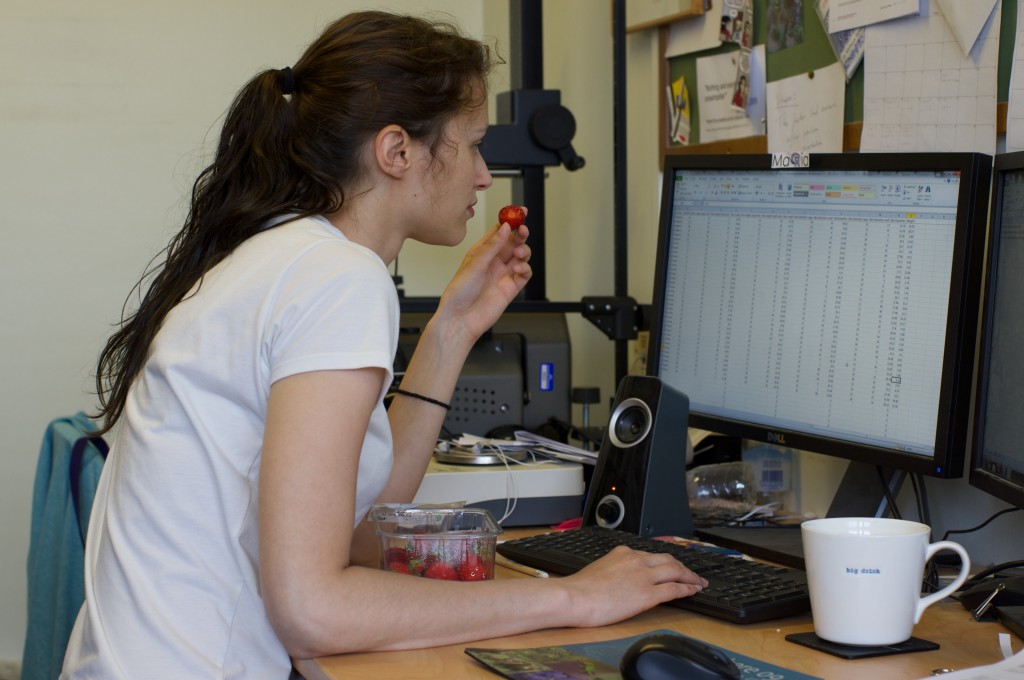As I am sure you are all aware, it is Wimbledon fortnight! And of course, it would not be Wimbledon without rain (Saturday is not looking very promising according to the Met office) and decent amounts of strawberries! And by decent I mean 28,000 kg of strawberries, according to the official Wimbledon page.
This extraordinary quantity of strawberries comes in all shapes and sizes and that is precisely the sort of thing I find interesting. With my primary focus in botanical morphometrics it would have been surprising if I hadn’t taken the opportunity to investigate this further. Morphometrics goes much further than simple measurements and comparisons. It is a collection of tools that can help explain biological variation focusing on shape and sometimes size.
To satisfy my curiosity, I went sampling (some people may call this “going to Sainsbury’s for strawberries” but I will insist on calling it sampling!) and picked up three different cultivars to study further. I have already noted just how diverse the shapes and sizes are even in the same punnet, and with the literature suggesting high variation depending on a range of factors (for example position of the fruit on the plant) this is shaping up to be a challenging exercise. I am currently collecting all the data I can from the strawberries, using everything in my disposal, from calipers to beakers full of water (thank you Archimedes!) and I am looking forward to the data analysis stage.
Next time you enjoy some strawberries take a moment to really look at their diverse and wonderful shapes. Last but not least, as a botanical twist: even though they are called “-berries” they are technically fleshy receptacles and the actual fruits are the little “seed-like” structures (called achenes). For a more thorough botanical look into strawberries do visit the Botanist in the Kitchen blog, which has a wonderfully engaging and detailed post on them.


